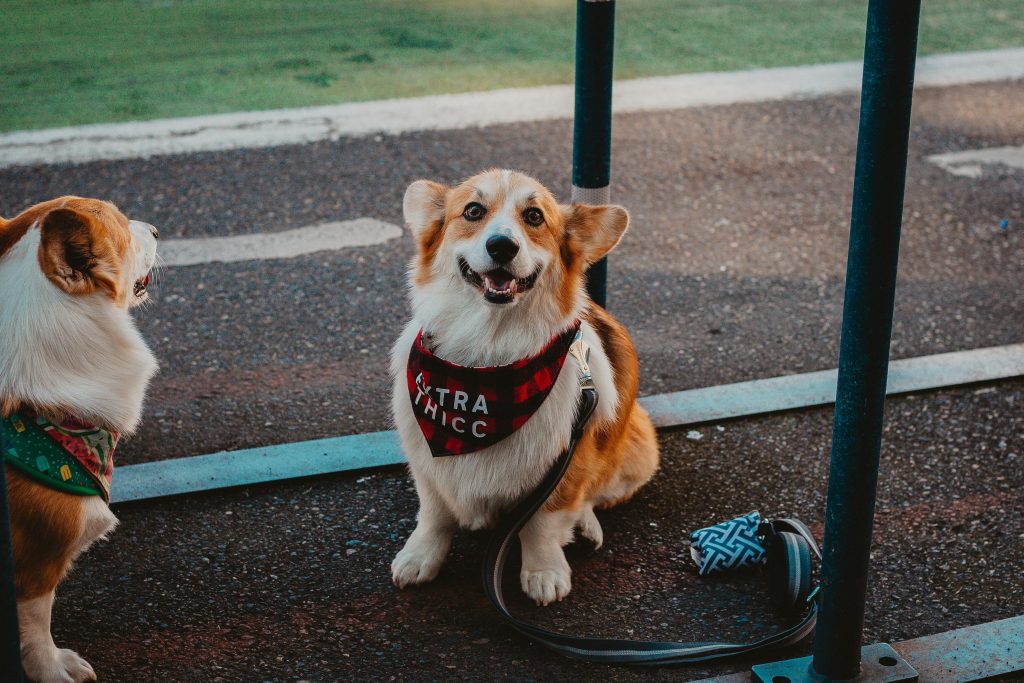1.The Purpose and Importance of the “Wait” Command
Teaching your dog the “wait” command means instructing them to stay still and calm in a specific position until further notice. This is especially useful during outings when you need your dog to remain quietly by your side—such as waiting at a crosswalk, picking up a coffee, or chatting with friends.
When a dog receives the “wait” command, its brain naturally shifts into a calmer state. That’s why it’s also effective for managing excitement—for example, when your dog gets overly eager to go outside, this command can help reduce that impulsive energy.
2.Verbal Cues and Hand Signals
The recommended hand signal is to hold your palm up, facing the dog, as if making a “stop” gesture. A simple verbal cue like “Wait” or “Stay” can be used.
Before introducing the “wait” command, make sure your dog has already mastered the “sit” and “down” commands. These two foundational skills indicate your dog has developed a basic level of discipline and self-control, making it easier to teach them to wait. Additionally, they allow you to fine-tune your dog’s posture during the wait command.

3.Basic Techniques for Teaching Your Dog to “Wait”
①Key Training Principle: Reward Immediately for Correct Behavior
The very first rule of successful training is to reward your dog immediately when they perform the desired action. This helps your dog associate the command with the correct behavior.
As soon as your dog gets into the proper waiting position—whether it’s for one second or five—you should reward them right away so they understand what you want them to do.
② Start with Short Waits and Gradually Increase Time
Begin with very short waiting durations. Each time your dog successfully waits, be sure to reward them without delay. This keeps your dog interested in the training and motivated to follow the “Wait” command.
If you try to increase the waiting time too quickly, it can lead to frustration and training setbacks. Be patient and consistent, building the duration gradually as your dog becomes more confident.
③Step-by-Step Guide for Basic Wait Training
⑴ Begin with a basic position by asking your dog to “Sit” or “Lie Down.”
⑵ Move directly in front of your dog and extend your palm out toward them, using a clear verbal cue such as “Wait.”
⑶ If your dog remains still, immediately praise them and offer a treat. At the start of training, always keep the treat ready in your hand so you can reward your dog as soon as they complete the action.
⑷Once your dog consistently performs the basic “wait,” you can begin advancing the training based on your personal needs—such as longer durations, more distractions, or greater distance.
⑸Use the cue “OK” to release your dog from the wait position. This lets them know they’re free to move again and marks the end of the exercise.

4.Advanced Training — Gradually Increasing Difficulty
①Increase Distance Gradually
Start by keeping your distance from your dog short. If your dog can wait by your side for more than 10 seconds, begin stepping back slowly—make sure the round-trip time (to walk away and return) stays within the time your dog can remain still.
As your dog’s waiting duration improves, gradually increase the distance. Keep in mind that dogs are more likely to lose focus when their owner is farther away. Keep an eye on your dog—if they seem ready to move, reinforce the “Wait” cue or take a step closer to regain their attention.
②Incorporate the Wait Command into Daily Life
Whenever you briefly leave your dog’s side—like picking up a food delivery or grabbing something from another room—use the “Wait” command. Moving around nearby while your dog holds position reinforces the training and builds reliability in real-world settings.
③Improve Focus with Distractions
Once your dog can wait for extended periods, introduce distraction training. For example, toss a toy and ask your dog to keep waiting without moving.
If your dog is easily distracted, use a leash and step on it to limit their movement. Then begin introducing distractions. Always say “Wait” before throwing the toy to reinforce focus.
Gradually reduce the distance between the toy and your dog as training progresses.
End every session on a positive note—if your dog struggles with a new challenge, return to a level where they can succeed. Let them complete one successful attempt, give a reward, and then finish the session.

